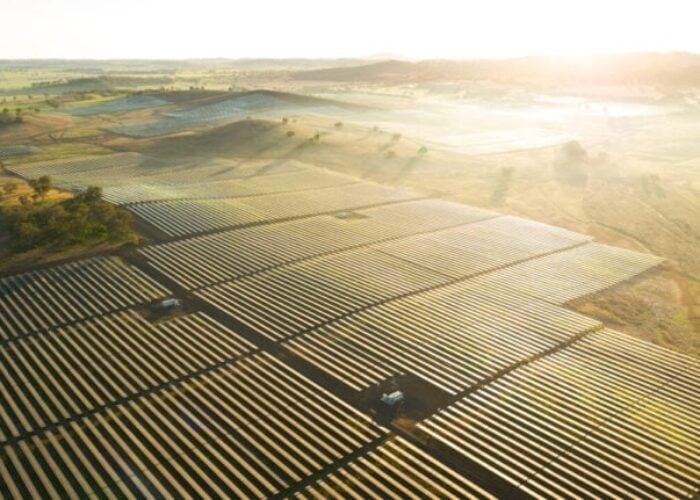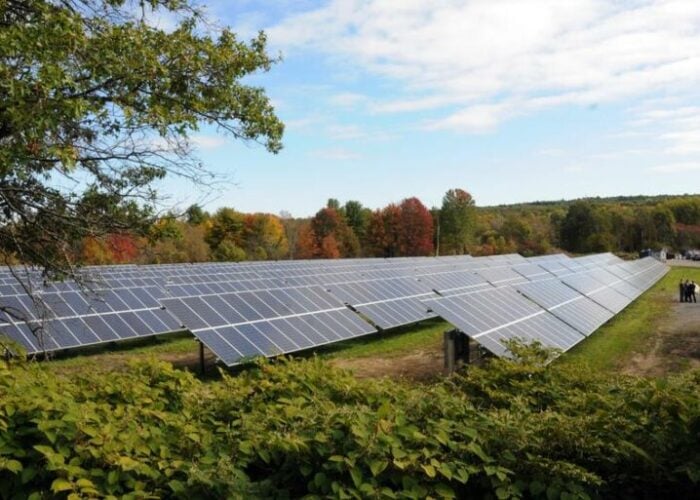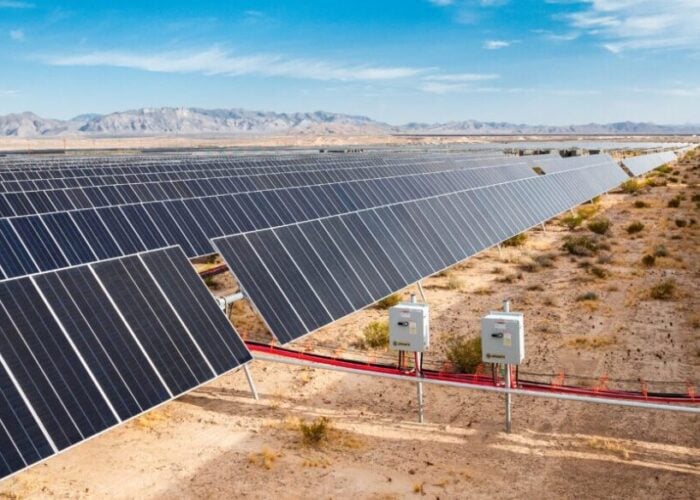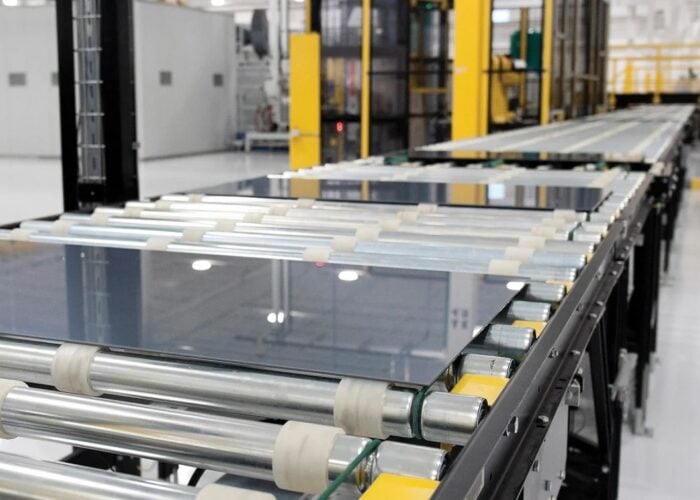Solar investors in the US and further afield would really love to get their hands on Mexico's solar market: great resource on cheap desert land located squarely in the southern sun-belt. Some experts estimate that it would only take PV panels spread over just 25km2 of land in Chihuahua or the Sonoran desert to supply Mexico’s electricity demand.
National legislation to reduce carbon emissions 30% by 2020 and constrained natural gas supplies are pushing companies to renewable choices like never before. There is only one utility company to deal with, the state-owned Comisión Federal de Electricidad (CFE).
Unlock unlimited access for 12 whole months of distinctive global analysis
Photovoltaics International is now included.
- Regular insight and analysis of the industry’s biggest developments
- In-depth interviews with the industry’s leading figures
- Unlimited digital access to the PV Tech Power journal catalogue
- Unlimited digital access to the Photovoltaics International journal catalogue
- Access to more than 1,000 technical papers
- Discounts on Solar Media’s portfolio of events, in-person and virtual
And its nearest neighbour is a guzzler of imported electricity and already linked through the Western Electricity Coordinating Council.
Electricity trade between the United States and Mexico started in 1905, when privately owned utilities located in remote towns on both sides of the border helped “balance” electricity demand with a couple of low voltage lines, according to the US Energy Information Agency.
Since 2006, Mexico has been a very small net exporter of electricity to the US. But electricity imports will likely boom after the Department of Energy granted a permit to a subsidiary of Sempra International for a 230-kilovolt (kV) transmission line that will carry electricity from a Mexican wind farm to the California market.
Meanwhile, Baja California is the location for Latin America's largest solar installation to date, a 30MW project to be completed by the end of this year.
When US president Barack Obama met Mexican president Enrique Peña Nieto earlier this month, renewable energy was firmly on the agenda (along with gun control, economic cooperation and illegal drugs).
Unlike the US, however, Mexico even has an energy policy. The freshly minted National Energy Strategy 2013-2027 agreed only in April estimates that 6GW of solar energy could be developed by 2020.
Some say that estimate is way too conservative and forecast that PV will boom under these conditions, perhaps even 150-fold, while shorter term solar growth could go from today's estimated 50MW-70MW capacity to 250MW by 2015.
Oh, and did I mention its growing population of 114 million inhabitants and an annual GDP growth rate last year of 4%? As if that weren't good enough news, the grid has been overbuilt by 50% to accommodate anticipated growth as the country recoups its losses from the global recession.
John Skibinski is executive director at Global Renewables Group, which is based in Las Vegas with a subsidiary in Mexico called Socios Energeticos de Mexico Verde.
During a webinar ahead of the Mexican International Renewable Energy Congress in Mexico City next week, Skibinski said:
“Within two and a half years at most, Mexico will explode in solar energy because its infrastructure is ready for it. Its economic climate is now accelerating, its government climate is favourable towards solar and wind … there is so much desert land available at low cost. We should see 250MW by 2015 of deployed solar farms in Mexico easily.”
He said that energy-intensive industry was facing a price on carbon that could force more interest in renewables.
“What we found from one steel mill was that for every 3MW of natural gas [electricity] production, they need 1MW of solar to [reduce their] emissions footprint,” said Skibinski.
“Even at the corporate level, not just national level, corporations are saying, hey if I'm going to keep my production on full, I've got to do something about [greenhouse gas] (GHG) reductions. So a lot of people are going to be turning to solar to keep their production going as well as ramp up.
“Mexico is the 11th largest economy in the world, and it's also the 11th largest carbon polluter in the world. It's the second largest polluter in Latin America, so it's highly focused on what it should do with solar and wind.”
Skibinski, who has clearly sweated it out in the field, cautioned half-hearted solar developers hopeful of striking Mexican gold.
“You've got to bring your own support when you come to this country, there is nobody here that knows solar, there is nobody here that knows wind,” he said.
“It's new to the country and it requires training, development as well as pilot installations. We've done that for the utilities, the banks and the government we've shown with pilot installations how we can reduce GHG emissions. They are highly interested in new technology – they don't want solar panels that are 15 years old, 100W panels not going to cut it and they are already looking at 115W.”
Skibinski has already seen some developers get burned by the Mexican sun.
“I have seen 50 independent power producers apply for power plant generation – two of them got approved,” he said.
“The other 48 were on the wrong place on the grid. You've got to do your homework when you want to put in an installation into Mexico. A utility will deny your application if it doesn't fit their needs, they are very good at what they do in terms of their grid.”
Brian Schmidly, the chief executive of Rio Grande Solar, said he was more cautious about the speed of deployment in Mexico, where his company has development partners.
“You're going to see growth in the PV industry,” he said. “I just think it's going to be slow this year and pick up a little bit of steam in 2014, but you could potentially see 250MW by 2015.”
Schmidly said that government subsidies for electricity and bespoke deals between commercial and industrial consumers and their electricity provider were major barriers to the development of solar in Mexico. Retail rates for electricity varied between 10c per kwh and 15c per kwh, way too wide a variation for investor appetite.
“Most consumers negotiate rates with CFE – subsidised electricity rates makes solar difficult to compete,” he said.
Recent reversals in price declines for PV panels could also compound the problem and slow PV plant development in Mexico, he said.
“Panel prices [have] moved north for first time in three to four years,” he said.
“[Panels] usually represent about 40% of a PV plant's cost. So if that's a trend that we're going to continue to see as a result of the Japanese and Asian markets turning round a little bit faster than everyone was expecting, then you could see some of the cost advantages for Mexico coming down and that's a trend that we need to watch.”
Ernesto Hanhausen, managing director of Emerging Energy & Environment's CleanTech Fund, said that the push for PV installations might come more from “emergency needs for power than regulation and willingness of the government”.
He compared Mexico's grid system to North Korea in that its electricity system is so centralised. But the Mexican government had been creative in its approach to stimulating private sector investments such as “banking power” where CFE will take excess electricity and store it, reimbursing the generator up to 85% of retail value.
But Hanhausen warned that constrained natural gas supplies were both a boon and a challenge for renewables. “In the north-west, there's big demand for natural gas and that's where the largest development of PV could be,” he said.
He added that construction of a natural gas pipeline from the US could supply areas with greatest demand for electricity such as in the north, but that progress was slow, whereas renewables could be deployed more quickly.
“In the [next] five years, the best way for Mexico to be able to cope with electrical demand is to really exploit the possibility of developing renewable energy because that can come into play much faster than the installation of potential gas pipelines,” said Hanhausen.
“That is a great motor for these projects to be developed and we believe there is a good future there.”
But the financing required to build the Baja California project illustrates the scale of capital and political will needed to push large-scale solar projects in Mexico: Gauss Energía provided US$25 million and Nacional Financiera, the national development bank, and the World Bank will together stump up US$75 million.
However, now is the time to at least drive a stake in the sand and begin conversations with potential customers, said Schmidly. He described Mexico as currently “a market for more adventurous solar developers”, but one that is set to take off in the next few years.







